Radiata pine silviculture in Chile
Donald Mead, New Zealand Tree Grower May 2010.
This article is based on a visit to Chile in April and May 2009, visiting Instituto Forestal and forest companies near Concepcion and Valdivia. Chile has about 1.5 million hectares of radiata pine which accounts for 65 per cent of their forest plantations. Unlike New Zealand the plantation area in Chile is expanding at about 40,000 hectares a year, of which about a third is radiata pine. Small farmers can get substantial subsidies for planting but they prefer to plant the eucalypts Eucalyptus globulus or E. nitens, with their shorter 12-year rotation.
Matching sites
The larger vertically integrated forestry companies own their own forests to supply their pulp mills, sawmill and veneer plants. They are therefore focused on overall profitability of their enterprises and their wood requirements, which include a large steady supply of pulpwood. In recent years pulp has been profitable. However, they carefully match their silviculture to site quality and topography, making use of computer programmes that include climate, soil fertility and depth maps.
Therefore, for example, on low site quality sites they will aim for high volume pulpwood stands by growing at high stockings, often without thinning. On the best sites the final crop stocking is about 400 stems per hectare and include pruning and commercial thinnings. On intermediate quality sites the final crop stocking will often be about 600 stems per hectare. The companies explained that they aim for full site occupancy. This is reinforced by the need to control weeds and in some cases native vegetation regeneration under the trees. As some natives are protected by law, their presence can create management problems.
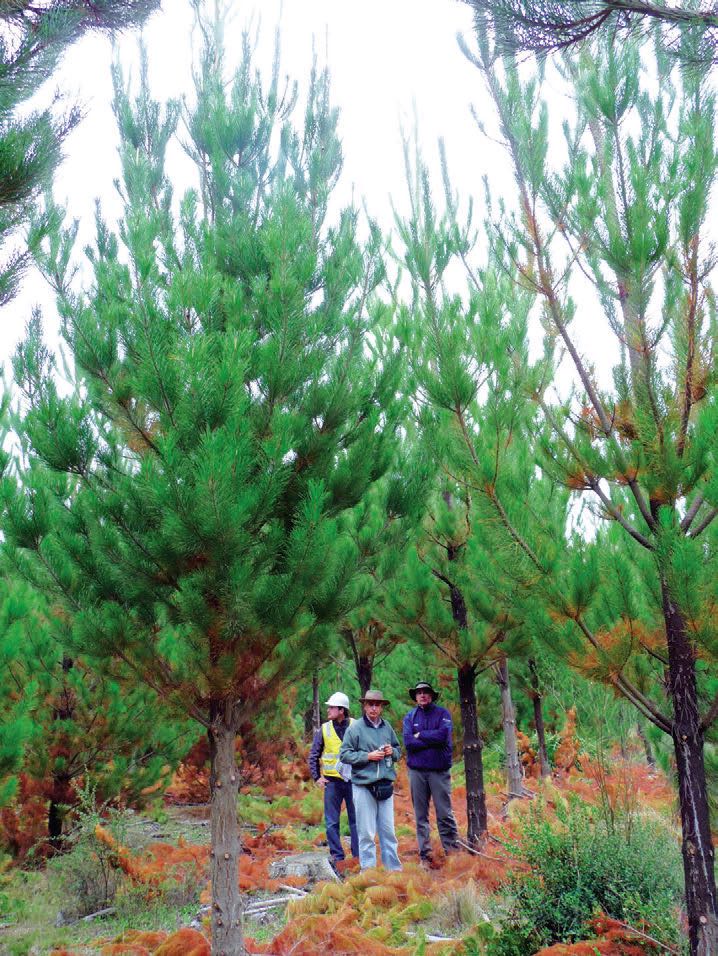
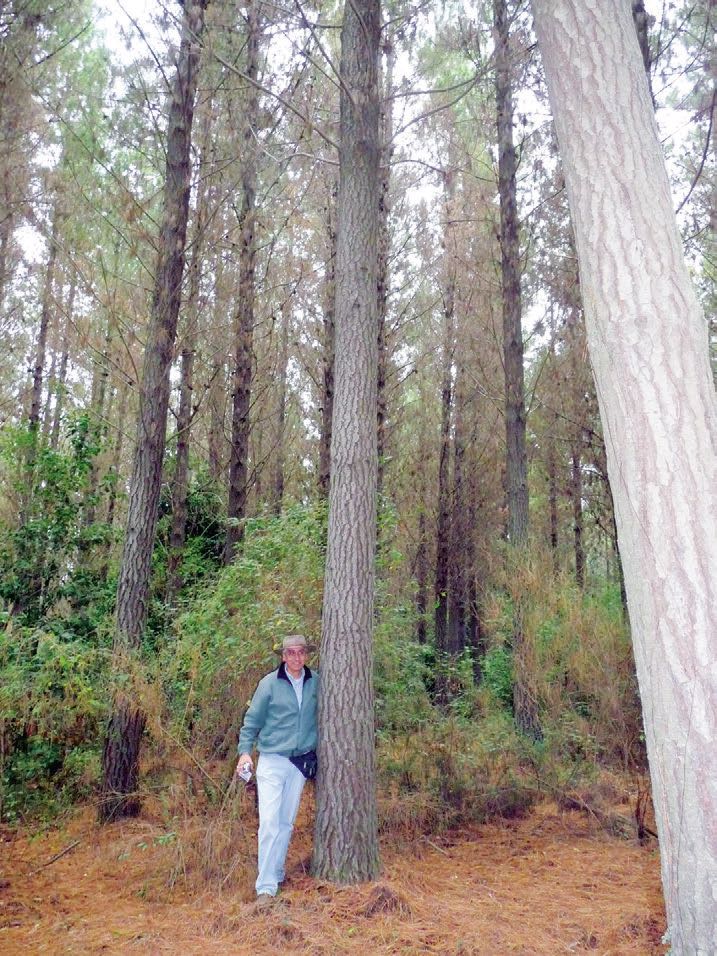
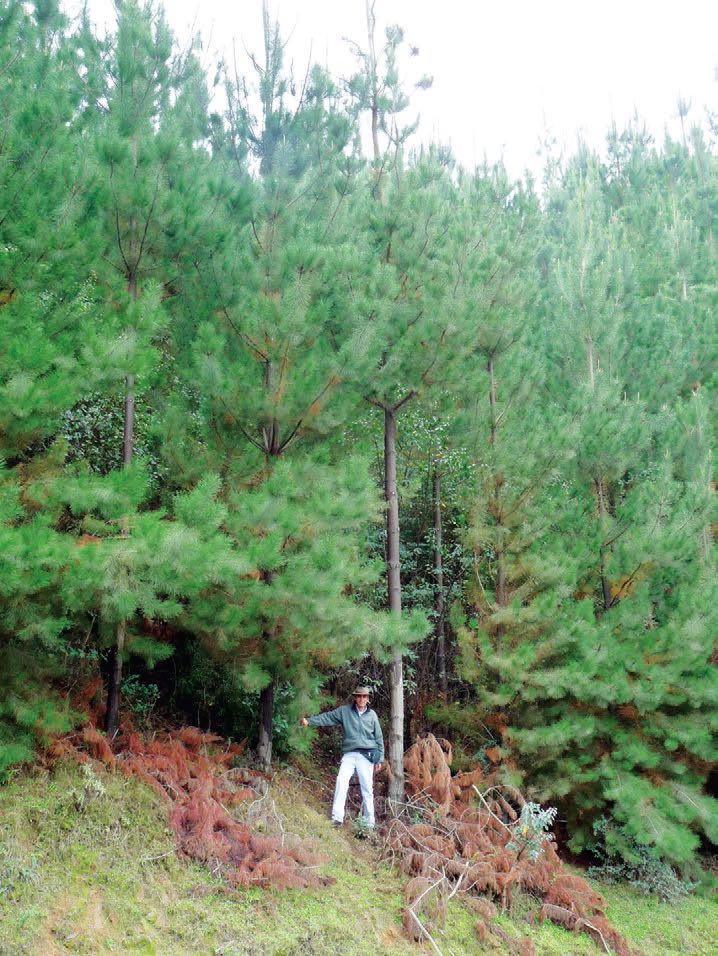
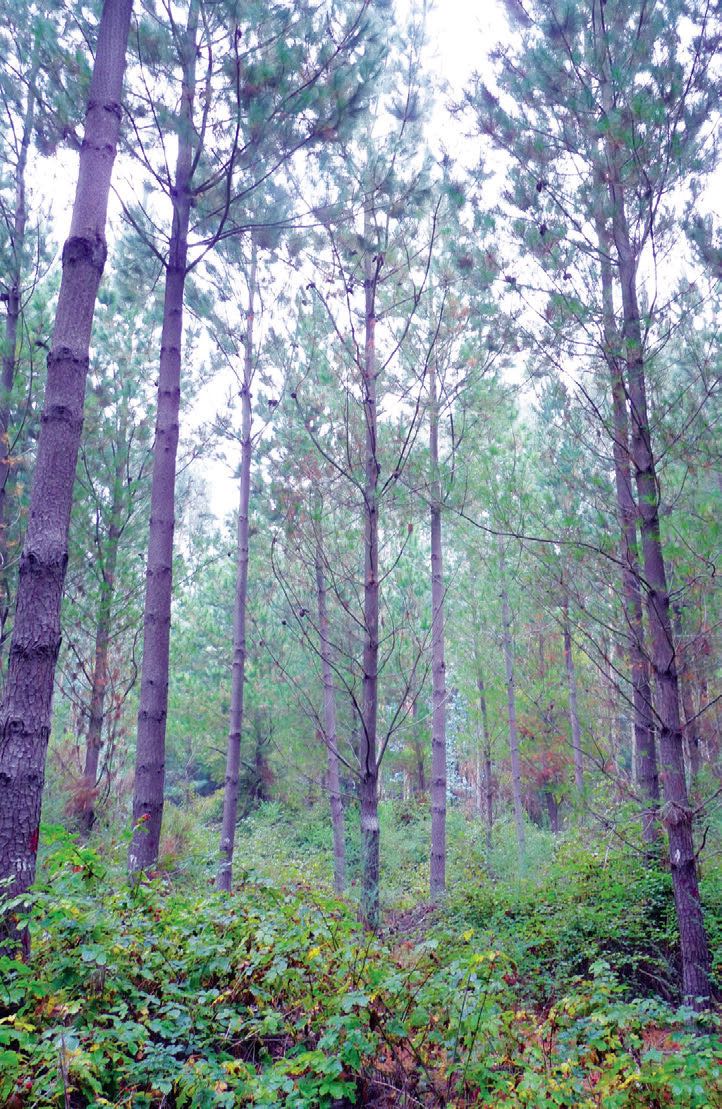
Minimal tending regimes
About 10 per cent of radiata stands are grown as pulpwood stands. These are usually low site quality sites or where topography creates problems with commercial thinning. Bosques Auraco, for example, plants at about 1,600 stems per hectare on a 15 to 18 year rotation.
At Forestal Mininco their extensive silviculture on poorer sites is to plant at 900 to 1,250 stems per hectare and commercially thin to a residual stocking of 600 to 700 stems at 11 or 12 years. The thinning yield is 40 to 50 cubic metres per hectare.
If the site index is greater than 25 metres they will give a single pruning to the potential crop trees at eight metres dominant height leaving 2.8 metres of crown length. The pruning objectives are for a small peeler and for ?re prevention. Rotation length is 24 to 25 years.
Arauco has a similar schedule for intermediate site quality sites of about site index 28 metres −
- Planting 1,250-1,600 stems per hectare
- Two prunings to 3.5 metres height
- Commercial thinning at 9 to 10 years to 700 stems per hectare
- Rotation age about 25 years
Intensive pruning regimes
Intensive pruning schedules are kept for the more fertile sites. Again, there are similarities with Arauco and Mininco. Neither company was doing any thinning to waste. Where feasible they have two commercial thinnings and grow on rotations of about 23 to 25 years with a final crop stocking of 400 stems per hectare. Initial stockings range from 1,250 to 1,600 stems per hectare with up to 1,430 per hectare at Mininco on their very best sites. Most are planted with field cuttings but increasingly somatic embryogenesis plants are being used.
There is widespread use of oxen for commercial thinning on gentle topography, sometimes in conjunction with skidders. On hilly country further South near Valdivia, towers are commonly used to extract thinnings. Extraction costs are 15 to 20 per cent higher than on gentle sites and there is slightly more damage to the residual trees. On steeper fertile sites where the initial commercial thinning is not feasible, Forestal Mininco deliberately plants at lower stockings of 900 to 1,100 plants per hectare.
Different schedules
Their pruning schedules are slightly different, but it is noticeable that both Arauco and Mininco leave more crown length than is typical in New Zealand. Arauco typically leaves seven metres of crown length at each of their three prunings to achieve a pruned log of 5.5 metres. They do not set target diameter over stubs but it is typically about 21 cm. The final tree diameter is about 40 cm. Their yield of clear ply is therefore only six to eight per cent.
The long crown length means that there is little problem with a loss of dominance from followers.
Timing the pruning
Mininco pruning schedules are more intensive than Aurauco. Mininco leaves around five metres of crown length and achieve a diameter over stub of 17 to 18 cm. They have four prunings to achieve a pruned log length of 7.9 metres. This provides three plywood logs.
The timing of pruning and thinning is not as closely connected as in New Zealand because of the need for intermediate harvests. They therefore prune more trees than will be left after thinning. For example, if the site required a first pruning to around two metres at five years, 700 stems per hectare would be pruned. After the first commercial thinning at eight to nine years the residual stocking would be 600 stems per hectare. Lower site quality sites are not pruned above 5.5 metres.
Small farmers
In contrast to the larger companies, farmers often use less intensive schedules. They typically plant at about 1,250 per hectare of unimproved seedlings and have only one thinning and pruning at between six and eight years. Planting and perhaps the first thinning and pruning operations are subsidised. The objectives of these minimum tending schedules are to grow pulp and unpruned sawlogs which are often sold to the larger companies. By law they are meant to replant after clear felling.
Health problems
Boron deficiency is common and is often corrected by applying two to three grams of boron per tree as calcium borate. Phosphorus, and less frequently nitrogen, are sometimes applied at the time of planting on volcanic soils. Phosphorus and nitrogen are also occasionally applied at mid rotation. Responses are site specific.
As well as the presence of Dothistroma needle blight and Diplodia pinea in radiata plantations there have been two other major problems which are not present in New Zealand. Copper spraying against Dothistroma is now less common than in the past.
A shoot tip insect, Rhyacionia buoliana, is widespread in radiata pine plantations but is now considered a minor problem since the introduction of biological control. In 2003 a new fungal disease started causing problems and by 2009 it had spread to about 60,000 hectares. The problem tends to be worse in humid coastal areas or close to streams and in wetter years and can occur in all ages of trees.
The disease begins in old and new foliage at the base of the crowns in September and October. Needles do not fall but there are black bands on the needles. Cankers occur occasionally in young trees. Whole stands may die after three years of infection, although with mature trees the cause of death may be other opportunistic organisms.
Research suggests that the fungus is Phytophthora pinifolia. However, some Chileans consider the problem may be more complex, with perhaps a mixture of diseases being involved.
Chile may provide helpful pointers
We can see that in Chile thinning and pruning silviculture has evolved to meet the needs of their large industries. In 2008, out of 27.5 million cubic metres of radiata pine logs harvested, 56 per cent were sawlogs and 35 per cent as pulp logs for local industries. Only around 0.2 per cent of logs were exported as logs or chips.
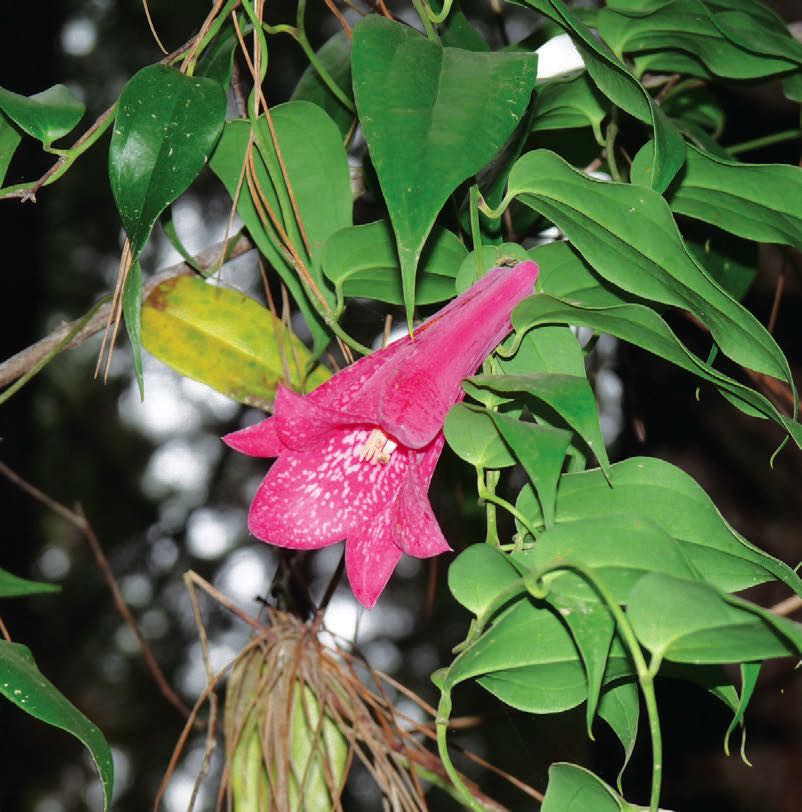
Chile has ensured high use of the stand growth potential by incorporating commercial thinnings and this has been helped by having relatively cheap labour and using animals. There is less emphasis on large diameter pruned logs and the later thinnings and higher stockings tend to keep branch size under control.
On the negative side there is a possibility that these practices may have exacerbated the new fungal disease on more humid sites. Foresters comparing different schedules use a relatively high discount rate of around nine per cent and calculate land expectation value with land costs excluded. The companies argue that as they have no intention of selling their forests the value of land need not be taken into account.
The New Zealand situation is different from Chile with less vertical integration of the industry and a lot more logs being sold overseas unprocessed. Therefore our thinning and pruning schedules tend to be different. However, if a bioenergy market develops in New Zealand which could support the greater use of commercial thinnings, as is currently occurring in Nordic countries, the Chilean experience may have helpful pointers.

 Farm Forestry New Zealand
Farm Forestry New Zealand